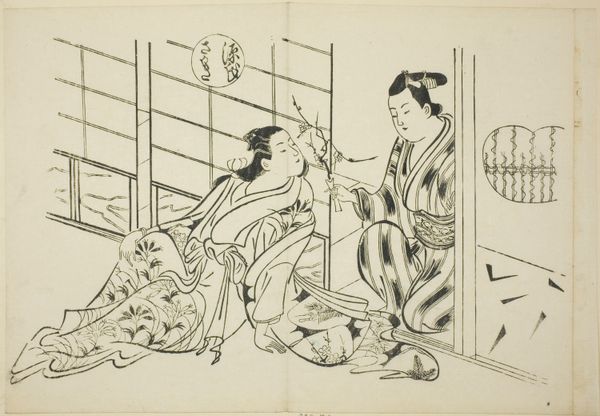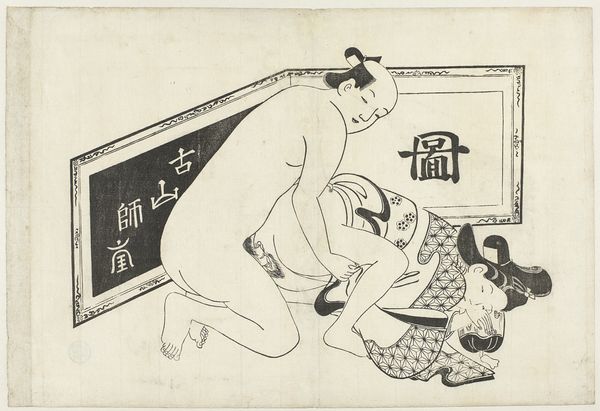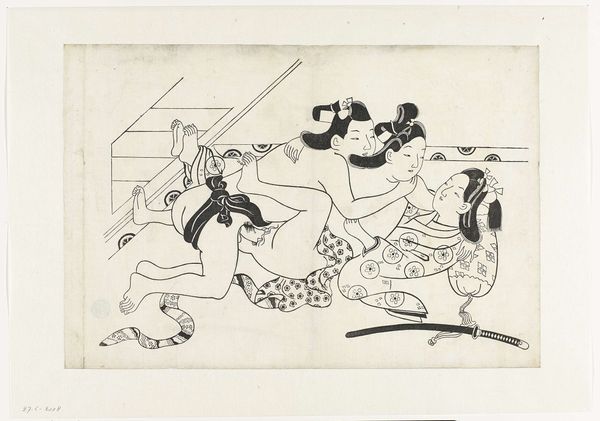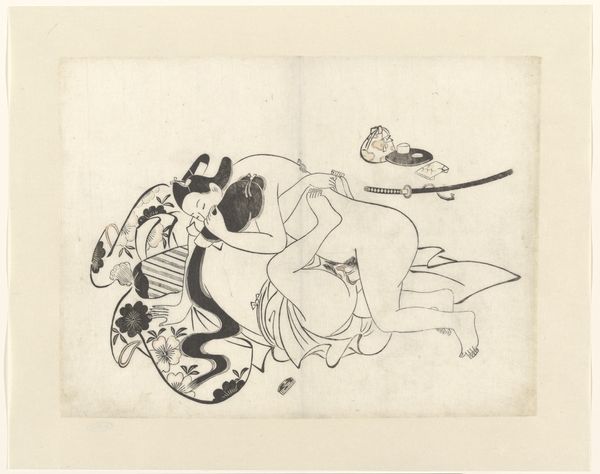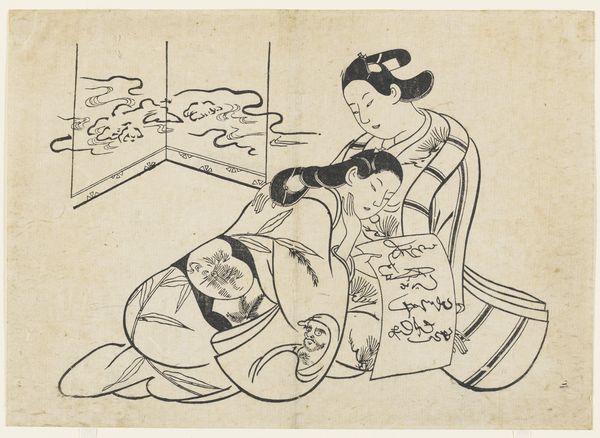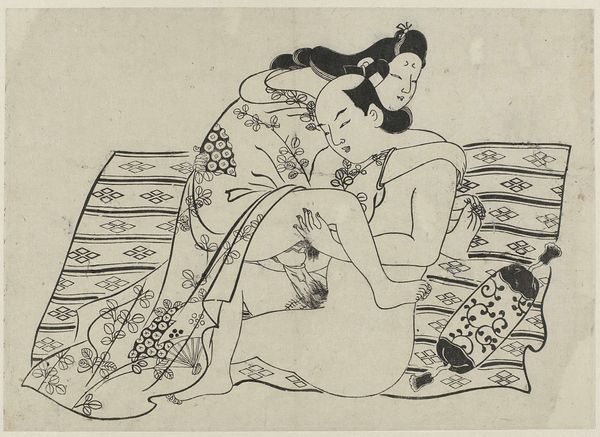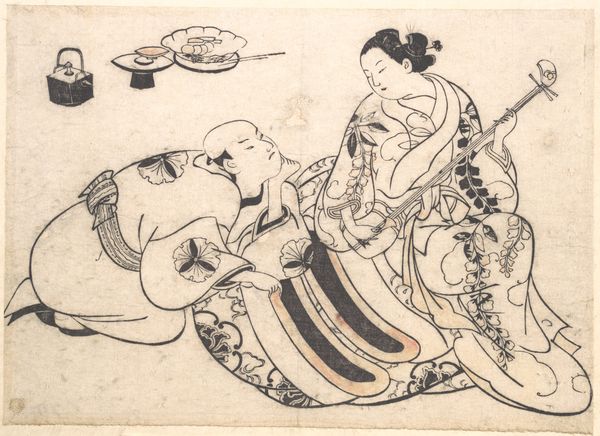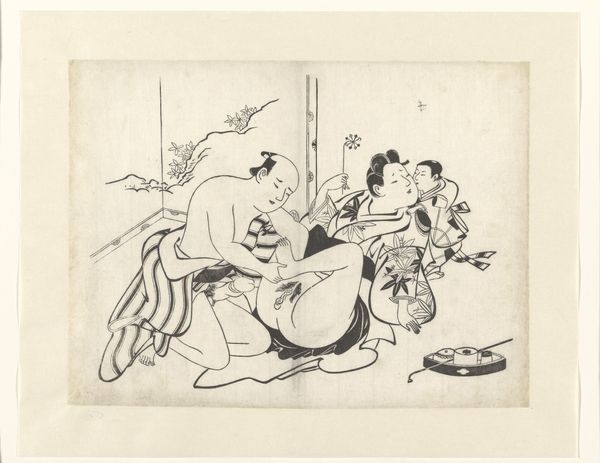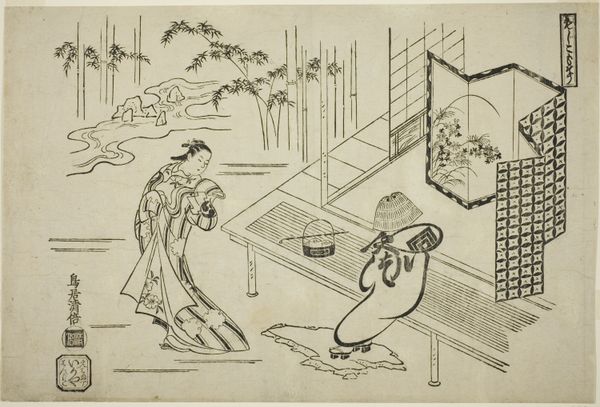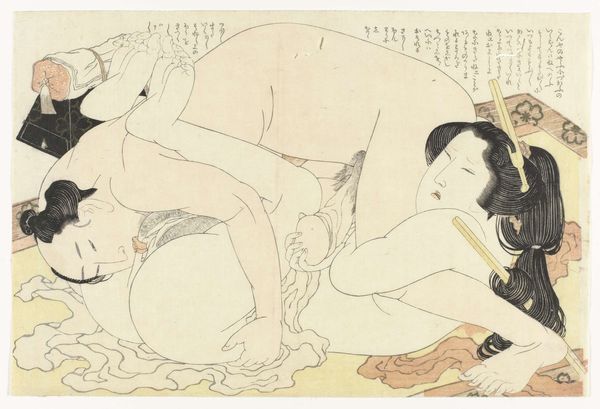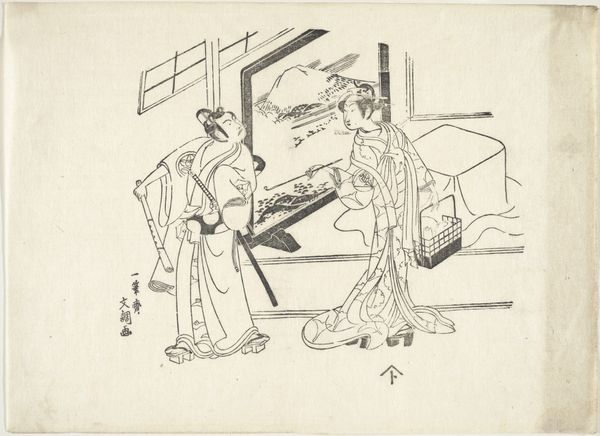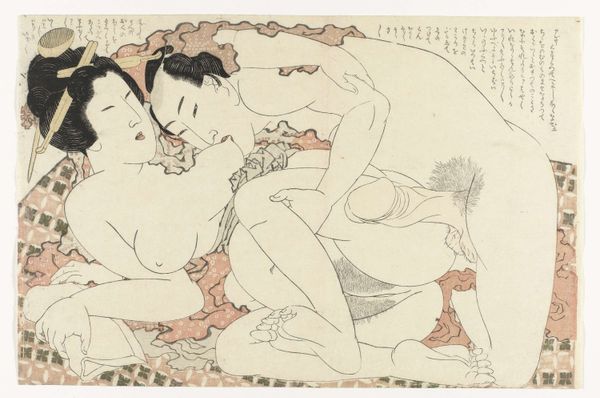
drawing, print, ink
#
drawing
#
imaginative character sketch
#
quirky illustration
# print
#
ukiyo-e
#
cartoon sketch
#
figuration
#
personal sketchbook
#
ink
#
ink drawing experimentation
#
pen-ink sketch
#
sketchbook drawing
#
genre-painting
#
cartoon style
#
cartoon carciture
#
sketchbook art
#
erotic-art
Dimensions: height 280 mm, width 392 mm
Copyright: Rijks Museum: Open Domain
Editor: Here we have Sugimura Jihei's "Erotische voorstelling," a print likely made between 1680 and 1698, rendered in ink. There’s a striking boldness to the composition and its uninhibited depiction. What layers do you see within this piece, beyond the immediate portrayal of intimacy? Curator: This shunga piece isn’t simply about eroticism; it's a window into the sociopolitical landscape of Edo-period Japan. Consider how these images functioned outside of mainstream art. Shunga prints like this were often circulated among both men and women, offering a playful, sometimes subversive commentary on power dynamics and social expectations, particularly around sexuality. Who do you think controlled the narrative of who got to experience and represent pleasure? Editor: So, the seemingly explicit nature might actually be a challenge to the established norms? That’s fascinating. Were these works considered transgressive at the time? Curator: Precisely. While not always openly condemned, their existence pushed the boundaries of what could be depicted and consumed. Also, note the presence, or perhaps intrusion, of the clothed figure—the witness. Think about who this figure might represent, what social classes or positions were deemed ‘outside’ the experience being presented, and whose gaze really mattered at the time. This brings in considerations of class, voyeurism, and social stratification, and who has the privilege to not feel observed. Editor: I never would have considered that before. It completely reframes my understanding of the image. Curator: Indeed, understanding the nuances of the ukiyo-e tradition, and shunga in particular, allows us to deconstruct societal narratives and examine the interplay of pleasure, power, and representation across time and culture. Editor: It’s amazing how much history can be embedded in a single image. This definitely challenges how I approach art analysis. Curator: Absolutely. Art is rarely created in a vacuum.
Comments
No comments
Be the first to comment and join the conversation on the ultimate creative platform.
